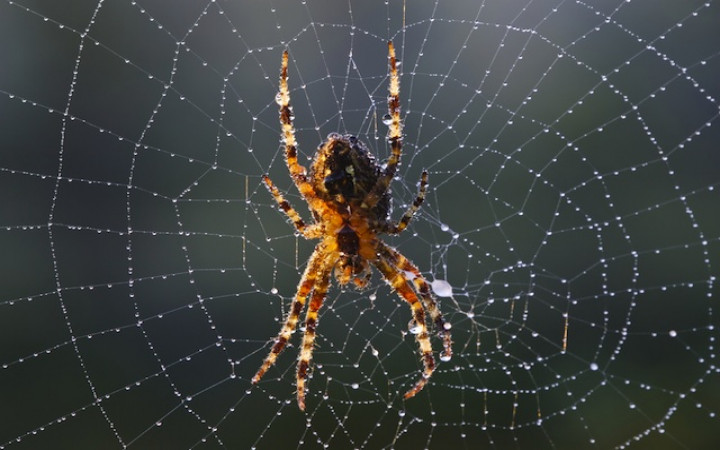If you've ever seen a new home being built, you know that the workers use wooden boards to frame the house. Instead of boards, spiders produce silk threads to build their webs.
The silk is produced in silk glands with the help of the spider's spinnerets. Spinnerets are special organs that allow the spider to decide what type of thread it needs for the web.
The silk threads can be thick or thin, dry or sticky, beaded or smooth. The threads a spider uses to construct its web begin as liquid, but they dry quickly in the air.
Spider webs are quite elaborate. How do spiders learn to make such complex geometrical patterns? Making webs is instinctive for spiders, which means nobody has to teach them how to do it. They are born knowing how.
When a spider begins a web, it releases a silk thread. It anchors the thread to some object — a branch, a corner of a room, a doorframe — wherever it builds its web.
As the spider moves back and forth, it adds more threads, strengthening the web and creating a pattern. Lines that go from the center of the web outward are called "radial lines." They support the web. Threads that go around and around the web are called "orb lines."
So why do spiders spin webs? When you need food, you go to the grocery store. When a spider is hungry, it heads to the web.
The main reason spiders spin webs is to catch their dinner. When an insect, such as a fly, flies into a spider's web, it gets stuck on the sticky threads.
When a spider catches prey in the sticky strands of its web, it approaches the trapped insect and uses its fangs to inject venom. The venom either kills or paralyzes the prey, allowing the spider to enjoy its dinner in peace.
Not all spiders use webs for food, however. Some don't build webs at all. Other spiders chase their prey. Some even make sticky nets, which they throw over their prey when it gets close enough.




